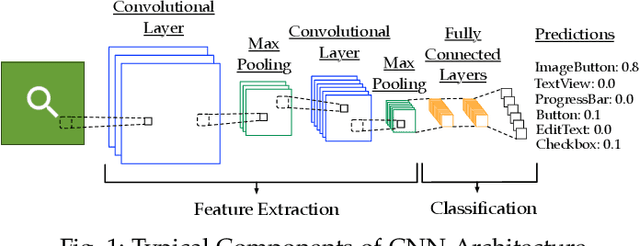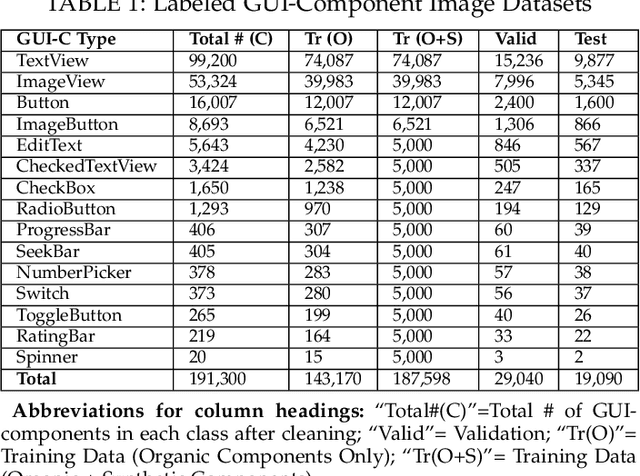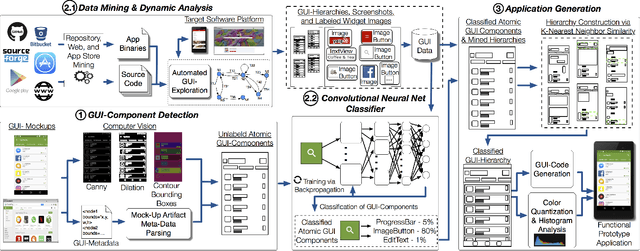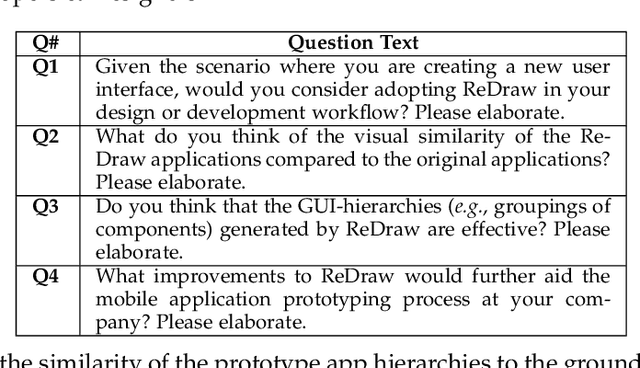Richard Bonett
Machine Learning-Based Prototyping of Graphical User Interfaces for Mobile Apps
Jun 05, 2018



Abstract:It is common practice for developers of user-facing software to transform a mock-up of a graphical user interface (GUI) into code. This process takes place both at an application's inception and in an evolutionary context as GUI changes keep pace with evolving features. Unfortunately, this practice is challenging and time-consuming. In this paper, we present an approach that automates this process by enabling accurate prototyping of GUIs via three tasks: detection, classification, and assembly. First, logical components of a GUI are detected from a mock-up artifact using either computer vision techniques or mock-up metadata. Then, software repository mining, automated dynamic analysis, and deep convolutional neural networks are utilized to accurately classify GUI-components into domain-specific types (e.g., toggle-button). Finally, a data-driven, K-nearest-neighbors algorithm generates a suitable hierarchical GUI structure from which a prototype application can be automatically assembled. We implemented this approach for Android in a system called ReDraw. Our evaluation illustrates that ReDraw achieves an average GUI-component classification accuracy of 91% and assembles prototype applications that closely mirror target mock-ups in terms of visual affinity while exhibiting reasonable code structure. Interviews with industrial practitioners illustrate ReDraw's potential to improve real development workflows.
 Add to Chrome
Add to Chrome Add to Firefox
Add to Firefox Add to Edge
Add to Edge